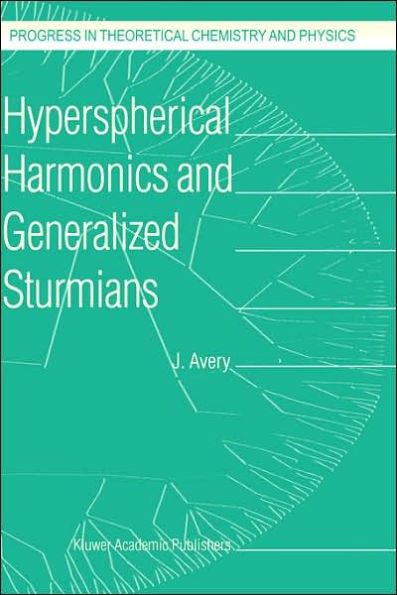This book explores the connections between the theory of hyperspherical harmonics, momentum-space quantum theory, and generalized Sturmian basis functions; and it introduces methods which may be used to solve many-particle problems directly, without the use of the self-consistent-field approximation. The method of many-electron Sturmians offers an interesting and fresh alternative to the usual SCF-CI methods for calculating atomic and molecular structure. When many-electron Sturmians are used, and when the basis potential is chosen to be the attractive potential of the nuclei in the system, the following advantages are offered: the matrix representation of the nuclear attraction potential is diagonal; the kinetic energy term vanishes from the secular equation; the Slater exponents of the atomic orbitals are automatically optimized; convergence is rapid; a correlated solution to the many-electron problem can be obtained directly, without the use of the SCF approximation; and excited states can be obtained with good accuracy.
This book explores the connections between the theory of hyperspherical harmonics, momentum-space quantum theory, and generalized Sturmian basis functions; and it introduces methods which may be used to solve many-particle problems directly, without the use of the self-consistent-field approximation. The method of many-electron Sturmians offers an interesting and fresh alternative to the usual SCF-CI methods for calculating atomic and molecular structure. When many-electron Sturmians are used, and when the basis potential is chosen to be the attractive potential of the nuclei in the system, the following advantages are offered: the matrix representation of the nuclear attraction potential is diagonal; the kinetic energy term vanishes from the secular equation; the Slater exponents of the atomic orbitals are automatically optimized; convergence is rapid; a correlated solution to the many-electron problem can be obtained directly, without the use of the SCF approximation; and excited states can be obtained with good accuracy.

Hyperspherical Harmonics and Generalized Sturmians
196
Hyperspherical Harmonics and Generalized Sturmians
196Hardcover(2002)

Product Details
| ISBN-13: | 9780792360872 |
|---|---|
| Publisher: | Springer Netherlands |
| Publication date: | 11/30/1999 |
| Series: | Progress in Theoretical Chemistry and Physics , #4 |
| Edition description: | 2002 |
| Pages: | 196 |
| Product dimensions: | 6.10(w) x 9.25(h) x 0.02(d) |
